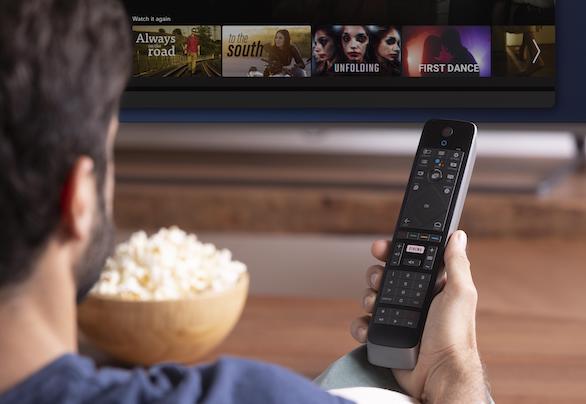


April 19, 2021
Eyes4Research
So the vaccines are rolling out amid arguments on who gets what and when. Locally the questions are about eligibility, pecking order, costs, safety, where to go or who can dispense the vaccines. What about blood clots? Are civil rights going to be breached by enforced vaccinations and will travel be limited by new health passport controls? Many people are wondering what kind of world is going to emerge following this unexpected crisis. Some may be fearful and hope for a return to pre-pandemic conditions but others have a vision of a new and positive future fueled by expectations of successful mass vaccinations. Wise owls might ask if vaccines will ever be the cure-all hoped for.
Tourism is vital to the economies of many countries, especially those with smaller or less stable communities and limited natural resources. Globally, millions of jobs and businesses depend on a thriving tourist trade. The World Travel and Tourist Council (WTTC) estimates a threat to around 174 million jobs if the pandemic continues. There is no crystal ball to tell us when it will ever be really over or if/how the world will survive. The current situation is grim, of that we are all certain but what is not clear is how the travel industry was faring even before the Covid-19 virus hit.
Media reports on ailing businesses and failing airlines seem to suggest that tourism was on a downward trend yet the 2019 report from the World Tourism Organization (UNWTO) contradicts this view. The industry accounts for some 10% of global GDP and in the pre-pandemic year 2018-2019 of strong world economies, revenues grew by around 5%. Smiles all round. Fast forward into the summer of 2020 when dire predictions were being made of up to an 80% decline in global tourism and in the first sector of 2021 the official figure showed an actual drop to 85%. Frowns all round.
There is some hope of a rebound from the decline later in 2021 but significant recovery is not expected until late in 2023 or even beyond. Experts are no longer talking of tourism restarting but of the need for a complete shift in thinking. The industry must make a sustainable recovery and, in the future, become more resilient. With so many people’s livelihoods dependent on these factors, it is perhaps time for a review. Shall we stop talking about getting back to before the pandemic but start planning how to move forward in a post-pandemic world? Tourism may have been buoyant before the crisis, but with world economies going into recession and lifestyles permanently changed, a brave new world scenario is beckoning. Vaccinations may only be a starter.
Governments are scrambling to vaccinate communities in droves as if they were cattle so that the monster virus is vanquished so we can all go back to work or school or our swimming pools. The reality is that for many it is too late; too much has been lost, businesses and jobs gone and debts climbing onto their backs. The positives of Covid-19 have had people remembering a community spirit, reminding themselves who lives next door, how parents can spend more time seeing the kids because they can work from home. Hotels, shops and restaurants are starting to reap benefits from staycationers plus businesses and regional transport gaining from locals who no longer feel the need to go further than the town for all their needs. Local economies may be smiling again but for the airlines and associated concerns, the future still remains a bleak image.
The state of the retail trade cannot be divorced from the tourist crisis assessment. Spending from overseas visitors brings significant national and local revenue. The news from the retail front though is not at all doom and gloom with e-commerce coming forward as the savior of the day. This shift in consumer behavior was already well underway before Covid shut down non-essential shops and stores. Customers soon found ways of letting their smart-phones do the shopping, a trend that is likely to continue and should be encouraged for retailers to survive and flourish again. Stores that reopen may need to make cuts in staff or close less productive outlets. Attractive offers, new products and value-for-money goods will be what those wise owls are likely to be advising. Adherence to hygiene standards and government guidelines may encourage a return to consumer confidence in bricks-and-mortar stores. If vaccinations show positive success in their part of the covid war, this double protection should bring back the shoppers and tourists again.
For many who have lost their jobs there are still industries that have continued to expand and hire recruits. Healing may be a long process, but it is also an exciting time of new directions, new opportunities and new hope.

April 17, 2021
Eyes4Research
The prolonged Covid-19 pandemic has had cataclysmic consequences for almost every major industry. The mobility sector is no exception with production and purchasing in lockdown. Lifestyles have altered dramatically during this time and studies on consumer purchasing intent post-pandemic have highlighted how these changes will impact the industry going forward. Surprisingly perhaps, the predictions for the future are optimistic, at least in the US and China. Three main reasons emerged for intenders to purchase new vehicles.
The overwhelming factor governing the interest in purchasing post-Covid is the desire to continue social distancing by avoiding modes of public transport. The feeling of being safer and more protected in a personal vehicle was a reason 55% of intenders gave as the reason for considering buying a new car after the Covid restrictions have passed.
2. Good Deals.
Customers are expected to take advantage of post-pandemic bargains. With few exceptions, global economies were negatively impacted in 2020, saved only to some degree by advances in digital technologies. Many consumers also lost out economically and feel they will be looking for bargain purchases as the restrictions are lifted. 25% of automotive purchase intenders expected the stagnant industry to be keen to offer discounts and incentives to buy.
3. Deterioration of current vehicle.
Fewer intenders gave this reason for purchasing a new car. A car that is becoming too old to drive is always one reason for deciding on changing it. It would seem that pandemic conditions would have made little difference but some vehicles may have deteriorated more than usual being unused for an unusually long period. Owners who intended to sell earlier or make substantial repairs were prevented during lockdown will now be looking to purchase a new vehicle.
Negative perspectives.
Current research suggests an upturn can be anticipated in the US and also in China. Findings also show that this confidence is not echoed in other countries including the major European economies of Germany, France, Italy, Spain and the UK, all of which have been hard hit by the pandemic. The principal reason for consumers not intending to purchase is the personal and national economic situation in these countries. Time and incentives may be needed to improve to remove these negative perceptions.
US confidence.
The downturn in the automobile markets in the last year look to be on track to make recoveries post Covid-19 if the industry reflects the changes in lifestyles during that time. Ecological and environmental concerns have continued to influence the type of vehicle purchases will be looking for. Some consumers will have money to spare having by living and working at home for the duration but many will be struggling financially and will be looking for cost-efficiency and reliability as of prime importance in the choice of vehicle. E-commerce has boomed in lockdown and those in the industry who have already developed online marketing strategies will likely benefit by continuing this trend. Incentives such as discounts, easy financing terms and full digital services will doubtless help speed the recovery.
Sources:
Ipsos COVID-19 Impact on Auto Global Study (2020)
Statista. Changes in New Car Purchase Intent (2020)

April 11, 2021
Eyes4Research
Netflix presents itself as a social concept, entertaining people and engaging them in a way that creates open-mindedness and brings communities together. Is this true or is this just the next level of profiteering, preying unethically on the emotions of the public for financial gain without due regard to the consequences? Are any of their competitors different and how have they been influenced by Netflix? With Netflix reporting some 200 million subscribers worldwide and rising public concerns about content, these are perhaps issues that need to be addressed.
Streaming services just keep growing, with big-name competitors like Disney squaring up to take on Netflix. There can be no doubt that Netflix has been the major player and mover in the transition to streaming media, developing rapidly from the early days of leasing out DVDs by post to embracing the internet and promoting OTT streaming services right across the globe. Other organizations like Hulu and HBO Max have jumped on board this innovation and introduced rival packages to poach subscribers but the minds behind Netflix repeatedly moved the concept on to the next level. Their massive success seems based on their intuitive understanding of market trends and simply, but boldly, taking the obvious next step ahead of the competition.
The world has leapt across bridges and scaled peaks in home entertainment since the advent of television which promised to advance global education and benefit society. News and documentaries have engaged minds, educated and advanced knowledge and understanding of our own communities and others. In this way, TV stations achieved the aspirations of early pioneers but in many homes became the center of attention, taking over leisure hours, changing eating habits, limiting daily communication between family, friends and guests. Some considered TV to be an inherently anti-social innovation and questioned where it would all lead.
At the same time as TV insinuated itself into homes, cinema provided increasingly fascinating visual entertainment, racking up the dollars for movie-makers. Yet movies still meant going out, being with others, discussing plots or reactions and interacting with friends and family. With the introduction of video recordings and the VCR, this too would soon change with stores renting out big-name movies for home viewing. DVDs and DVD players continued the trend.
In 1997, the creators of what would become Netflix, Reed Hastings and Marc Randolph saw an opportunity and began selling and renting movie videos by mail-order. Domestic life for millions refocused again with the possibility of watching TV at a more socially palatable time and movies at home, solo or as a sharing experience. Perhaps at this point, these developments mitigated the fears of detractors of modern media, but as the internet rapidly infiltrated every facet of working and home life, the same concerns would resurface.
Hastings and Randolph marched on, building up their number of film titles, providing viewing suggestions for renters and introducing a subscription scheme that became a business model for the future. As video-on-demand and consumer television services began to take over from traditional static broadcasting and video playback devices, big cable and satellite providers dominated the scene. Boxes became essential appendages to TVs, roads were ripped open to install cables and satellite dishes scarred rooftop views. Conversations revolved around getting sufficient broadband width and budgets had to factor in these extras and pay–per-view TV fees. The Netflix creators sensed the next move and reacted.
Advances in technology, so amazing in the 20th century, became meteoric phenomena in the 21st especially in the field of computer science. Once only found at work, personal computers soon sat alongside the TV. The cumbersome tower apparatus and accompanying clumsy desk barely hiding nests of wires shrank to a laptop on the table and minimized after to a hand-held wire-free tablet and finally withered to a smartphone. The internet changed lives and travelled across the world like a bouncing bomb, landing on societies in the farthest corners of the earth.
In 2007, streaming services, limited by broadband width and other negative factors, provided poor quality videos but Netflix decided to risk-all and launch a video streaming service via the internet. With their refined curating system, they uploaded content onto servers and made it available directly and instantly to subscribers. This would make binge-watching possible (and likely) and another age of home entertainment was evolving in the face of the cable giants.
Netflix had taken a huge gamble but the technology developed rapidly to make the vision a successful reality. Massive teething problems in the transition finally abated and by 2011, with Wi-Fi an established means of watching videos and TV, Netflix began developing its own content, again ahead of competitors. As the internet spread across the globe, so did Netflix streaming content to subscribers and without advertisements constantly interrupting services, another big plus for the company over alternatives.
Wi-Fi and streaming services, even live TV, meant that viewers had come back to the start. TV had brought benefits beyond just entertainment but the modern age allowed viewers to choose subscriptions meaning viewing-on-demand anywhere, anytime and on multiple devices. A new generation could live no other way and far from freeing-up social time. For many people, huge chunks of life had become lived out on a computer screen. Recently, social media has lambasted companies like Netflix for putting out inappropriate, even dangerous, content. Child-controls on devices are easily circumvented by young people where every friend or acquaintance has internet access on their phones and personal computers. Movies and TV shows involving unacceptable levels of sex, violence and obscenity are increasingly worrying where communities have indeed been brought in touch with each other but not necessarily in a beneficial way.
The billion-dollar success of Netflix evolved through assessing and curating the popular viewing choices of individuals rather than overall ratings and seeing the natural progression in technology. It follows, that their subscribers are still able to call the shots and, if Netflix, stays true to its format, unpopular or unacceptable content will disappear. Anti-social use of streaming services is perhaps a matter of how individuals respond to the choices available.